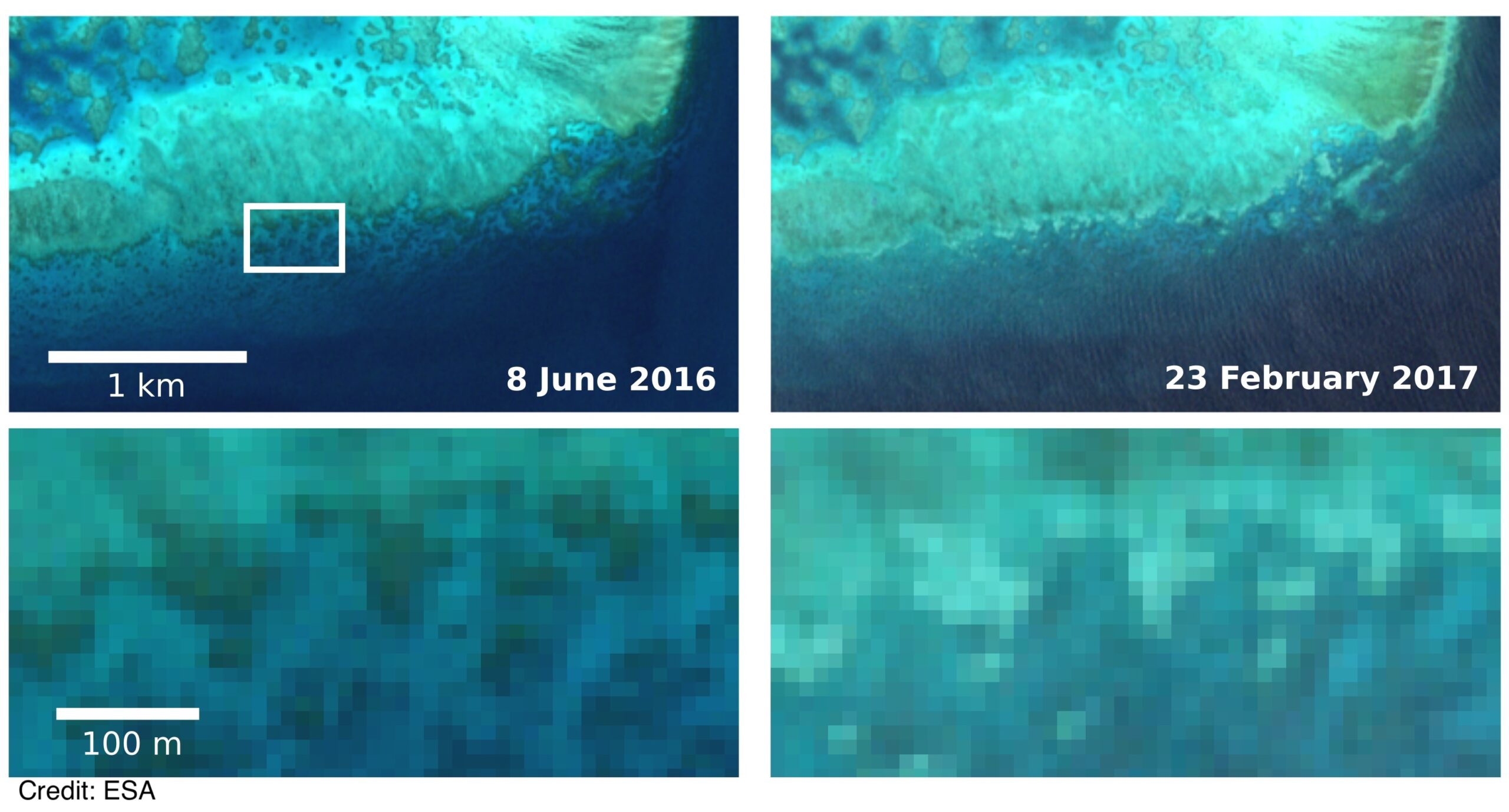Coral Bleaching
Coral bleaching
This phenomenon occurs when the algae living within coral tissues, which are crucial for capturing sunlight and supporting coral health, are expelled due to elevated water temperatures. This expulsion causes the corals to turn white. Bleached corals may die, impacting the reef ecosystem and, consequently, fisheries, regional tourism, and coastal protection. The bleaching can persist for up to six weeks. During this time, corals might either recover or die and become covered by algae, which darkens their appearance, making them difficult to distinguish from healthy corals in satellite images. Reliable detection of coral bleaching from space requires systematic and frequent monitoring. Additionally, rising ocean acidity, which weakens coral skeletons, further exacerbates the bleaching effects and hampers the corals’ ability to recover.
This image below reveals the coral bleaching of the Great Barrier Reef captured by Sentinel-2.

Links to further information:
https://www.esa.int/Applications/Observing_the_Earth/Health_
